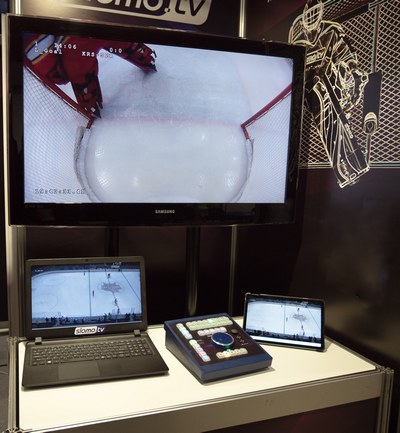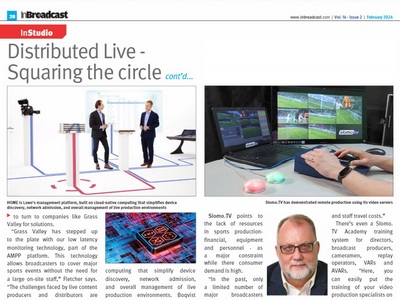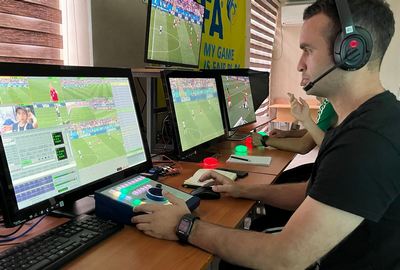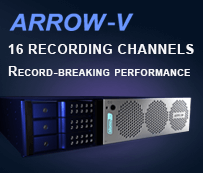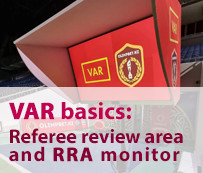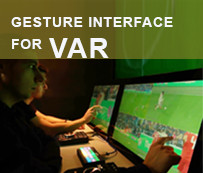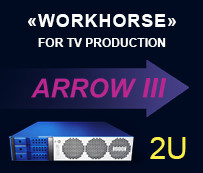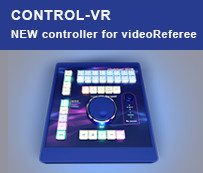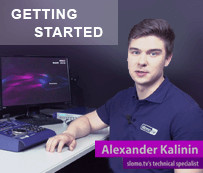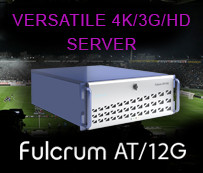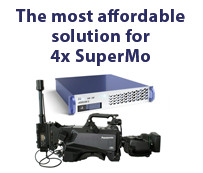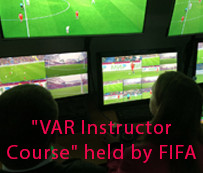- Details
The year 2024 was a period of significant changes, which can be described as tectonic shifts towards democratization and cost reduction in IP remote content production. Let's delve into the details of how and why these transformations occurred.
The COVID-19 pandemic and the resulting isolation had a profound impact on various sectors, including media production. It acted as a catalyst for a major change. Remote production over IP has become increasingly popular because it offers more attractive logistical and economic parameters for media. As a result, we now have a much clearer understanding of where workflow improvements can be made and the impact on the quality and price of the end product.
One of the key findings from this shift towards IP remote production is that many of the strict requirements traditionally associated with classic broadcast production have proven unnecessary. This realization has led even large TV companies to adopt technologies and techniques typically used in the world of streaming and small productions.
TV companies started using personal mobile phones for professional video production, and it turned out that the picture quality was quite satisfactory for the end consumer. It also turned out to be economically viable. Millions of mobile phones are being produced and the technical quality is quite good. However, there is one problem with using regular gadgets for professional video production purposes — video latency. When live streaming without delay is critical, a lag of 1-1.5 seconds can be detrimental.
The move to remote production over IP during the pandemic has shown that it can be a cost-effective solution without significantly compromising quality. While there are still challenges to overcome, such as minimizing video latency, the trend towards IP remote production shows promising potential for the future of media production. In addition, this approach allows for significant reductions in equipment and staff costs, as well as the ability to produce high quality content from remote locations.
Advantages of IP remote video production:
- Cost reduction. No need to invest in new hardware, as most studios are already properly equipped. Staff do not need to travel, which minimizes travel and accommodation costs.
- Efficiency. Fewer business trips are required, so more events can be covered with the same number of people. Equipment use becomes more efficient: it is connected to the network and works for longer periods of time. In addition, installation and disassembly of network AV equipment take less time than with conventional ones.
- Scalability. The LAN is infinitely scalable, so adding more hardware to your AV circuit becomes easier. Adding IP switches expands the settings, if necessary.
- Security. Encryption, firewalls and authorization methods ensure safety of AV networks controlled via software. The risk of hacking is lower compared to analog systems.
- Details
Having several independent video judging workplaces in recent years has become imperative.
Additional workplaces provide the ability to independently perform all the same functions as the main workplace without interference. These workplaces operate in parallel and offer the possibility of cooperation. There are 2 possible workplaces operational modes – teamwork and separate.
In the teamwork mode, you can forward the analysis of the situation to the designated main workplace. This format can also be used in the situation room, allowing the supervisor to instantly send his analysis to the on-field video referee/VAR.
In football, match officials can reach a consensus much faster by viewing multiple shots simultaneously from different workplaces. Moreover, by using several independent workplaces, it is also possible to analyze different moments in parallel. Thus support for 4 independent workplaces allows VAR and AVAR teams to work concurrently. The AVAR can monitor the incoming match feed to ensure that no controversial moments are missed as the VAR and his RO review the moment in question without any distractions.
It is also important to note that, according to FIFA requirements, if more than 12 cameras are used on the pitch, a minimum of 2 independent workplaces must be provided.
Some examples of separate mode:
- In ice hockey, additional video officiating workplaces are often used by video coaches to analyze the play in real time. This often results in a more intense game, which makes it interesting for the spectators.
- Furthermore, some ice hockey technical regulations require the guest team to be provided with a video refereeing system workplace in the same way as the home team. In this case, at least three workplaces are required for the video refereeing system: one for the video referee, one for the video coach of the guest team and one for the video coach of the home team.
- Additional workplaces are also frequently used in the League’s situation room, which can be located remotely. The remote supervisor's workplace should be completely independent of the video judge, allowing autonomous observation of controversial moments.
- Another example of a separate mode application is using a single server for video judging of multiple wrestling matches taking place simultaneously on different mats.
- Details
8 years ago, at the NAB 2016 exhibition, SLOMO.TV first introduced the RED ARROW server, which is still considered the most powerful multichannel recording and replay server for 4K/3G/SD/HD. The uniqueness of this server, then and now, is that this 2U system supported the 422 configuration (4 Rec + 4 Search + 2 Play + FX) in 4K replay mode, which no competitor has been able to surpass since. The maximum capacity that other replay server manufacturers could offer at the time was 3 Rec + 1 Play.
In terms of performance for 3G/SD/HD, RED ARROW offered the ability to record up to 20 3G channels and playback 4 3G channels in replay mode, while providing 4 workplaces. In recording mode, the system provided up to 24 channels for simultaneous recording of files for NLE. In addition, RED ARROW had 9 built-in DMR™ racks for 3.5" SATA removable disks. This was a unique server with unmatched capabilities. There are some competitors that can offer a 4 Rec + 2 Play configuration for 4K in UHD, but at the same time their 3G performance is limited to a maximum of 10 recording channels.
Here is an article about the system published by SVG Europe on 3 May 2016:
"Showcased at NAB 2016, RED ARROW offers 4 channels recording, 4 channels search and 2 channels playback with six 4K physical video ports – all in 4K 50p in a single 2RU enclosure. RED ARROW can also be used for 6-channel 4K 50p recording for non-linear editing.
Thanks to its four graphics ports RED ARROW allows four operators to work on one machine at the same time. For example, two operators work with configuration 662 (6 recording, 6 search and 2 replay channels), the other two with configuration 442 (4 recording, 4 search and 2 replay channels). While working simultaneously on one machine, each operator has their own display that can function as the Main Interface or in Multiviewer mode.
The system interface has a built-in Multiviewer that provides monitoring of input and output signals and search through four channels using one standard 1920×1080 monitor. Its SSD based array provides for storage of 266 hours / 100 Mbit HD video. The built-in DMR™ SATA slots can accommodate nine (9) 3.5" SATA drives that can record 18 channels in ProRes 422 and 18 Proxy SD channels or 24 channels DVCPro HD with SD Proxy.
- Details
The main challenge in modern sports TV production is the lack of resources – financial, equipment and personnel – while there is a high consumer demand for a wide variety of sports events to be broadcast.
In the past only a limited number of major broadcasters covered all sporting events, focusing on top-level competitions. The small and medium size companies due to the high cost of equipment could not fully participate in this market.
Today, even large companies are struggling, yet the number of sports competitions and market demand continue to grow.
SLOMO.TV offers solutions for sports broadcasting with reduced resources:
- Reducing the cost of equipment and increasing its productivity. A standard server from major manufacturers takes up a lot of space, only works with 10-12 recording channels and requires two operators. SLOMO.TV has a wide range of affordable servers for every need – from 4 to 32 channels in a compact unit (1U – 4U). Their high performance and ease of use allow one operator to work with, for example, 14 3G recording channels, thus saving on human and financial resources.
- Remote production – a new feature available for all SLOMO.TV systems. This innovative solution allows video specialists to work on the live production of the sporting event from a remote location over a 50-100 Mbps bandwidth Internet channel. Ultimately, remote production allows a single specialist to cover multiple sports competitions taking place at different venues on the same day, reducing equipment transport and staff travel costs.
- The Academy. With the SLOMO.TV Academy training system for directors, broadcast producers, cameramen, replay operators, VARs and AVARs you can easily put the training of your video production specialists on stream. Live broadcast technicians are rare; it takes both a high level of responsibility and artistic vision to master all the skills required for this narrow specialization. The Academy gives you access to a large talent pool at a much lower cost than traditional training.
Thus we allow the TV companies to budget their resources while producing more high-quality sports content for consumers.
- Details
Every year, the Sports Video Group Europe (SVG Europe), an industry association that supports the professional community that uses video, audio, and broadband technologies to produce and distribute sports content, interviews media persons and representatives of major companies in the sports video production industry about implemented projects and updates over the past year. The companies are also invited to share insights and opinions on technological trends that will affect the industry in the coming year.
Igor Vitiorets, CTO of slomo.tv, talked about the company's achievements and plans for 2024 and shared his vision on technologies development in live sports video production in the near future. You can read the 2022 interview here.
a) Please describe a couple of your sports production highlights since September 2022 – please include information about your involvement, any measurements of success, and also what it meant to your company.
Our company is confidently expanding its presence in football with VAR (Video Assistant Referee). Together with the Tajikistan Football Federation we worked on the implementation of VAR in the national championship. In addition to supplying the VAR equipment, slomo.tv specialists carried out intensive training on how to work with the system for VARs/AVARs/ROs. Thanks to the cooperation between slomo.tv and the Federation, the project was successfully completed and the VAR was officially implemented in Tajikistan.
After the official implementation of FIFA Quality certified videoReferee® VAR equipment, the Georgian Football Federation has expanded its VAR Van fleet by two more vehicles, equipping them with a full VAR sets produced by slomo.tv.
Since spectators and TV viewers want to follow the VAR reviews, all videoReferee® systems provide the video output of the referee’s interface to the broadcasters. Last year, we added RRA-MIDO - a venue information graphics function - to our VAR servers. The videoReferee® outputs VAR graphics to broadcasters and to the arena screens to keep the spectators informed of the VAR team's actions.
For basketball competitions we have developed and started production of a specialized mobile Instant Replay System (IRS). The IRS hardware in the mobile rack is installed next to the OB Van or in a technical room, and the compact videoReferee® Box is placed in the arena creating a complete workplace for a replay operator. Both units are connected via Fiber Optics cable, which allows the system modules to be installed up to 20 km apart from each other. This provides the customer with a flexible solution that works with any OB Van and allows the IRS to be installed in any arena. The referee review can be easily set up in compliance with IRS technical regulations and is also convenient for referees. A total of 14 kits were already sold.



